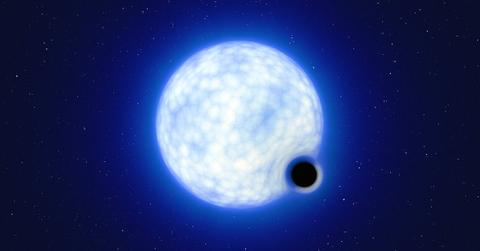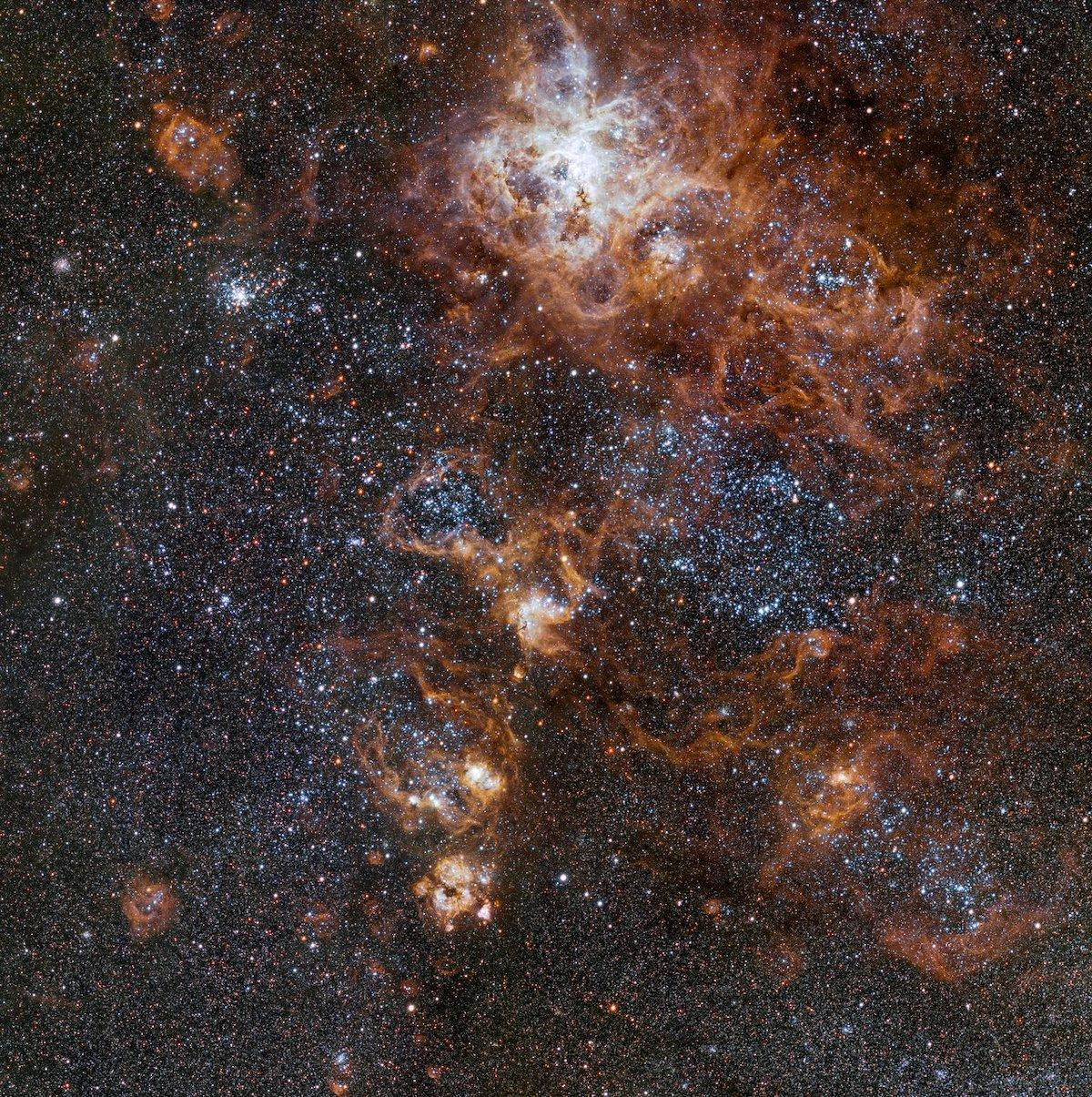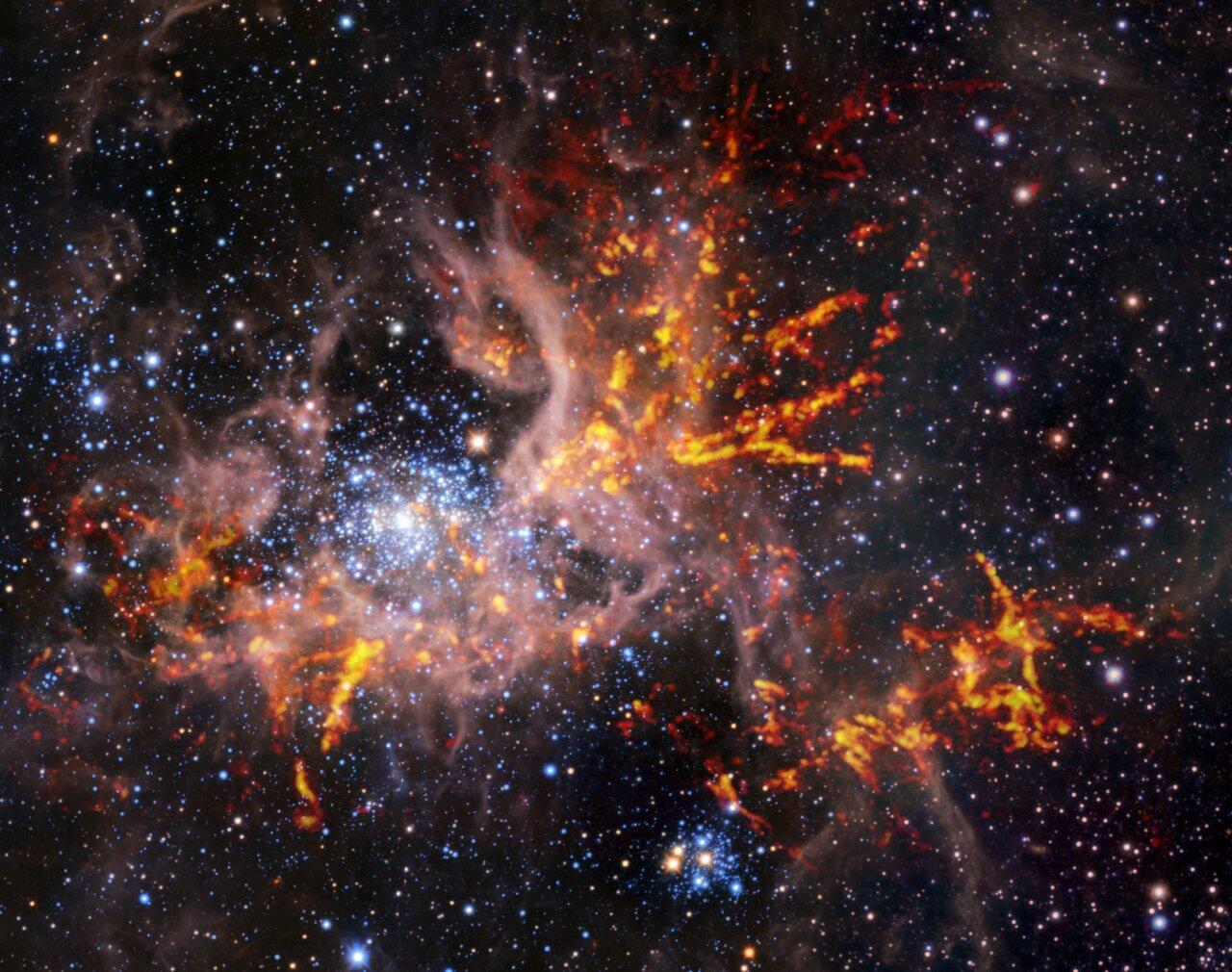Humans Have Discovered a Dormant Black Hole for the First Time
Published July 19 2022, 12:09 p.m. ET

This artist’s impression shows what the binary system VFTS 243 might look like if we were observing it up close.
Life is full of many great mysteries — there’s the Bermuda Triangle, black holes, and why that cute guy never texted you back. And speaking of black holes, experts just discovered a dormant black hole for the very first time, which could help teach us a lot about outer space.
But what is a dormant black hole, and why are they so difficult to spot? Keep reading for all the details on this exciting discovery.
A dormant black hole was discovered for the first time.
On July 18, the European Southern Observatory (ESO) announced that a group of black hole experts discovered a “‘dormant’ stellar-mass black hole,” located in the Large Magellanic Cloud. The Large Magellanic Cloud is a floating satellite galaxy of the Milky Way, located almost 200,000 light years from planet Earth, according to NASA.
As the ESO explained, the dormant black hole, named VFTS 243, is the first of its kind to be “unambiguously detected outside our galaxy,”
The experts found that the star that the dormant black hole was born out of mysteriously disappeared without any sign of exploding, which is rare for black holes.

The rich region around the Tarantula Nebula in the Large Magellanic Cloud
The team used the ESO’s Very Large Telescope (VLT) to make the discovery, and it’s the product of about six years of observation and research using the telescope.
The team who discovered VFTS 243 — and confirmed its status as a black hole — are actually well-known for debunking what others believed were were black hole discoveries. So, the fact that they were all in agreement on this actually being a black hole really says something.
“We identified a ‘needle in a haystack,’” Tomer Shenar, who led the study, said in a statement.
“As a researcher who has debunked potential black holes in recent years, I was extremely skeptical regarding this discovery,” Shenar added. "For the first time, our team got together to report on a black hole discovery, instead of rejecting one."

This composite image shows the star-forming region 30 Doradus, also known as the Tarantula Nebula.
What is a dormant black hole, exactly?
When a massive star reaches the end of its life, its own gravity causes it to collapse, and often cause an explosion. If there are two stars revolving around one another (known as a binary), this explosion causes a black hole to form, as per the ESO.
Essentially, a black hole is an area in space where gravity is so intense that nothing can get out — namely, light and radiation, according to NASA.
But what makes a black hole dormant? As explained by the ESO, black holes typically emit significant levels of X-ray radiation, making it possible to spot them from Earth; but when a black hole does not emit such X-ray radiation, it is classified as dormant.
The reason that dormant black holes do not emit X-ray radiation is because they do not feed on space matter, as per Space.com. Because dormant black holes don’t emit X-ray radiation or interact with their environment, it is typically nearly impossible for scientists to see dormant black holes.
“It is incredible that we hardly know of any dormant black holes, given how common astronomers believe them to be”, co-author Pablo Marchant said in a statement.
Not only is this an exciting scientific discovery on its own, but according to Space.com, the discovery of this dormant black hole could help scientists learn more about exactly how dying stars collapse — and about outer space as a whole.